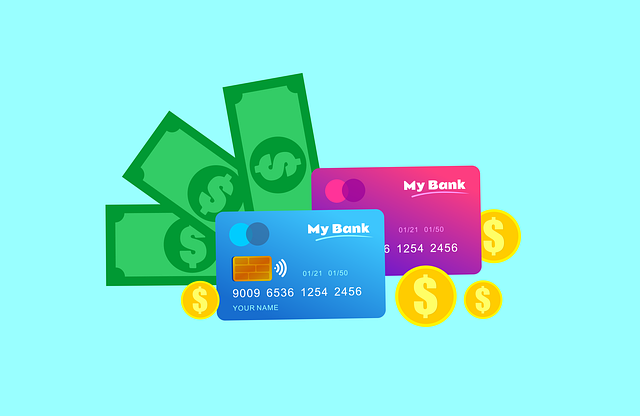South Africans facing multiple debts can breathe new financial life through debt consolidation. By combining various high-interest debts into one single loan with more manageable terms, individuals can reduce overall interest costs and regain control over their finances. With 40% of households burdened by an average 75% debt-to-income ratio, consolidation offers a way out of the complex debt landscape driven by high living costs and unemployment. This guide walks you through assessing your financial situation, researching lenders, understanding loan agreements, and creating a post-consolidation budget to maintain long-term financial health in South Africa.
South Africans facing multiple debts can find solace in debt consolidation—a strategic approach to merging various loans into a single, more manageable repayment. This guide delves into the concept and benefits tailored to South Africa’s financial landscape. We explore the current debt trends, offering insights into the challenges faced by many. Through a step-by-step process, we navigate how debtors can consolidate their debts effectively. Furthermore, post-consolidation strategies are presented to ensure long-term financial health and prevent future debt accumulation.
- Understanding Debt Consolidation: Unraveling the Concept and Benefits for South Africans
- The Current Debt Landscape in South Africa: Statistics and Challenges
- Steps to Consolidate Debt: A Practical Guide for South African Debtors
- Post-Consolidation: Strategies for Financial Management and Avoiding Future Debts
Understanding Debt Consolidation: Unraveling the Concept and Benefits for South Africans

Debt consolidation is a financial strategy that combines multiple debts into one single loan with a lower interest rate and more manageable terms. For South Africans grappling with several debts, this approach offers a potentially life-changing solution. By consolidating, individuals can simplify their repayment process, reduce overall interest costs, and gain better control over their finances.
In the context of South Africa, where high interest rates and various lending options can make managing debt complex, consolidation presents a powerful tool. It allows borrowers to negotiate better terms with lenders or consider specialized consolidation loans from banks or financial institutions. This method not only simplifies repayment schedules but also helps individuals free up money that was previously allocated for multiple debt payments, enabling them to focus on other financial goals and achieve long-term debt freedom.
The Current Debt Landscape in South Africa: Statistics and Challenges

In South Africa, the debt landscape is a complex and challenging one. According to recent statistics, over 40% of households have some form of outstanding debt, with an average debt-to-income ratio of 75%. Credit card debt, personal loans, and mortgage payments contribute significantly to this figure, especially among urban populations. The high cost of living, coupled with unemployment rates that remain persistently high, has led many South Africans to rely on credit as a means of managing their financial obligations. This reliance often results in multiple debts, with individuals struggling to keep up with repayment schedules.
The challenges posed by this debt situation are manifold. South Africans face the dilemma of balancing essential expenses with debt repayments, leading to a cycle of stress and financial strain. The consolidation of debt in South Africa has emerged as a potential solution, offering a structured approach to managing multiple debts under one roof. By consolidating debt, individuals can potentially lower their interest rates, simplify repayment schedules, and reclaim control over their finances—all vital steps towards financial stability and recovery.
Steps to Consolidate Debt: A Practical Guide for South African Debtors

Debt consolidation is a powerful tool for South Africans burdened by multiple debts. It involves combining all your existing debts into one single loan, often with a lower interest rate and more manageable repayment terms. This practical guide will walk you through the steps to achieve debt consolidation in South Africa.
First, assess your current financial situation by listing all your debts, including credit cards, personal loans, and any other outstanding balances. Calculate your total monthly repayments and compare them against your income. Next, explore various debt consolidation options tailored for South Africans, such as home equity loans or personal loans specifically designed to consolidate debt. Research different lenders and their interest rates, repayment periods, and any associated fees. Once you’ve identified the most suitable option, contact the lender, provide your financial information, and discuss the terms of consolidation. Ensure you fully understand the new loan agreement, including the repayment schedule and potential penalties for early repayment. By following these steps, you can take control of your finances and embark on a path to financial freedom in South Africa.
Post-Consolidation: Strategies for Financial Management and Avoiding Future Debts

After successfully consolidating your debts in South Africa, it’s crucial to implement strategies that support long-term financial health and stability. One key step is creating a robust budget that allocates funds for essential expenses, savings, and debt repayment—if applicable. This ensures that you live within your means and avoid accumulating new debts.
Additionally, consider leveraging the consolidation process as an opportunity to build creditworthiness. Make payments on time, keep balances low on credit cards (ideally at or below 30% of the limit), and regularly review your credit report for errors or signs of fraudulent activity. By maintaining a positive credit history post-consolidation, you’ll enhance your financial standing in South Africa and access better borrowing opportunities in the future.
Debt consolidation offers a strategic path towards financial freedom for South Africans burdened by multiple debts. By understanding the concept and taking practical steps outlined in this guide, individuals can navigate their way through the current debt landscape, gain control over finances, and avoid future monetary pitfalls. Embracing the benefits of consolidation is a proactive approach to managing debt responsibly, allowing South Africans to break free from the cycle and secure a brighter financial future.







